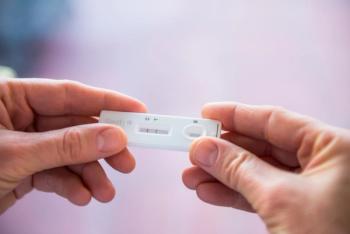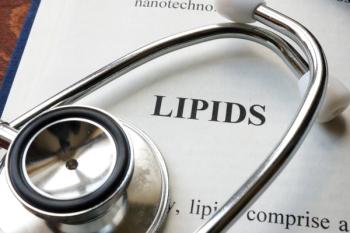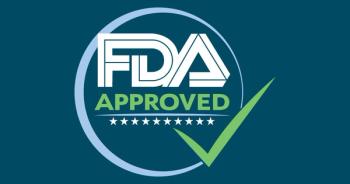
Your Voice
READERS' FORUM
Correction
The Guide for Patients in "
More information for traveling patients
The article "
With respect to immunizations:
All children, not just those preparing for travel, should complete the hepatitis B series.
Hepatitis A vaccine should be offered to all children traveling to or residing in areas of poor hygiene, including those in the United States. Gamma globulin makes hepatitis A infection subclinical (but not noncontagious); therefore, its use should be discouraged. Yes, gamma globulin is in short supply, and since hepatitis A is a relatively benign and usually subclinical illness in the under2-year-old population, parents should not be stressed over its lack of availability. Hepatitis A vaccine has not been shown to be completely effective in the under-2-year age group, but there is no contraindication to its use in a child who is approaching this minimum age, and it may be protective.
The oral typhoid vaccine has not been available in the United States for nearly two years.
There is no commercially available cholera vaccine in the United States. The previously available cholera vaccine was rife with adverse reactions and provided little protection. No countries currently require the vaccine, according to the World Health Organization; some, however, require proof of immunization (incorrectly) if the person is entering from a neighboring country. Making an entry of contraindication to the vaccine on the traveler's International Health Certificate (yellow card) may spare the traveler from being required to accept ineffective vaccine or dangerous injections at a border crossing.
Yellow fever vaccine is recommended for travelers to endemic areas and adjacent regions, regardless of whether it is a legal requirement for entry to the country. This is a point often misunderstood by physicians, travel agents, and patients.
A pre-exposure course of rabies vaccine costs at least $400 in the United States; almost no insurer pays for this. In addition, intradermal vaccine is no longer available. While travelers need to be cautioned about avoiding all animal bites, especially those from dogs and monkeys, few proposed travel plans justify recommending rabies vaccine.
Similarly, Japanese B encephalitis vaccine costs at least $250, and few insurers will cover the cost. Few travelers are truly at risk for this disease, and the vaccine has significant possible adverse reactions.
Meningococcus vaccine boosters are recommended at two or three years for those initially immunized under 4 years of age, and at three to five years for older initial vaccinees if they remain in a high-risk situation.
Malaria risk occurs in the tropical regions of Central and South America, and is not common there. The more endemic malarious areas are Africa, Southeast Asia, and India. The first line of defense against malaria is personal protection measures: clothing, insect repellents, and bed netting. As for the medications mentioned in the article, chloroquine resistance has been reported in most malarious areas, except in Mexico and Central America and limited regions elsewhere. The remaining choices presented in Table 6 are not of equal value. Alcohol should be avoided with mefloquine, and sunshine with doxycycline. Malarone has causal as well as suppressive action, with fewer side effects, but costs more than mefloquine and doxycycline. Pregnant women and infants under 1 year of age are usually discouraged from travel to malarious areas.
Dengue was not mentioned in the article, yet it may threaten more children than all the above-mentioned diseases combined. Dengue is a mosquito-borne viral illness, transmitted by a daytime biting Aedes in many tropical areas of Central and South America and Asia. The first attack will cause a week-long fever, intense headache and myalgias, and rash. A second infection with a different strain soon after the first episode may lead to dengue hemorrhagic shock syndrome, often fatal, especially for children. There is no vaccine or specific treatment for dengue; therefore, knowledge of its current distribution and personal protection measures, including repellent, are essential.
Providing preventive health information and vaccines to travelers to "the lesser developed countries" is complex, requiring resources and experience not found in broad recommendations from the Internet or an all-purpose walk-in medical clinic. Dr. Schuman's best advice is referring the parent to specialists in traveler's health. A specialist will consider the traveler's health history and specific travel plans, and prescribe accordingly. Obviously, a business traveler who stays in five-star lodgings will not have the same risks and requirements as the trekker headed into a rural area of the same country.
Two additional sources for lists of travel clinics are the American Society of Tropical Medicine and Hygiene, and the International Society of Travel Medicine (
Arthur S. Dover, MD, DTMH
Travel health consultant
Freedom, Calif.
The author replies: My intent in the article was to introduce pediatricians to the many topics pertaining to health and overseas travel. Those topics include accident prevention, care of the child with chronic illness, environmental hazards, and preparation of a medicine kit, in addition to general information about accelerating routine vaccine administration when possible and appropriate and the many vaccines recommended for overseas travel. As I indicated, the best community resource for providing information and travel vaccines is a facility that specializes in travel medicine. Pediatricians can and should refer families to travel medicine clinics, but such a referral should not preclude pediatricians offering advice and information that is within their scope of practice. I would note that the majority of physicians who practice travel medicine are not pediatricians, and may not adequately address the unique needs of younger patients. I have worked in a travel medicine clinic for over 13 years and have provided advice to parents and families regarding travel immunizations. As in most areas of medicine, opinions and recommendations may vary from one physician to another. I thank Dr. Dover for elaborating on several topics discussed in the article. I take issue with several points raised in his letter, however.
The article indicates that hepatitis B vaccine is a routine vaccine and describes how the routine schedule may be accelerated if necessary.
Hepatitis A prophylaxis for children as well as adults is strongly encouraged by the CDC in its Health Information for International Travel, 20002001, known as the Yellow Book. As indicated in the article, current vaccines are not thought to be effective in children under 2 years of age. Immune globulin is now becoming plentiful again, and I would encourage IG for the younger patient traveling to high-risk areas. While many cases of hepatitis A in young children are "subclinical," these children can in fact transmit infection to others. Dr. Dover is incorrect in his statement that IG renders hepatitis A infection subclinical but not noncontagious.
Here is a quote from the latest Yellow Book:
"Infants and children traveling to developing countries are at increased risk of acquiring hepatitis A virus (HAV) infection, especially if their travel is outside usual tourist routes, if they will be eating food or drinking water in settings of questionable sanitation, or if they will be in contact with local residents in settings of poor sanitation. . . . Although HAV is rarely severe in infants and children younger than 5 years of age, those infected efficiently transmit infection to other infants and children and to adults. Immune globulin (IG) should be given to infants younger than 2 years of age in the same schedule as that recommended for adults. Children 2 years of age or older should receive the pediatric formulation of HAV vaccine or IG. The first dose of vaccine should be given at least 4 weeks prior to travel."
Oral typhoid vaccine, although not available for some time, was due to become available again in the US this summer.
Cholera vaccine was indeed removed from the US market because the vaccine was ineffective. This lack of efficacy was discussed in the article.
I agree with Dr. Dover's observations regarding yellow fever, meningococcal, and Japanese encephalitis vaccine. Physicians should be aware that many routine vaccines and travel vaccines are expensive and are frequently not covered by insurance. Physicians are in a position of making recommendations, but parents ultimately make the final decision regarding which vaccines are administered.
In some areas, rabies is endemic, and access to health care may be limited. Children are more likely to play with stray or wild animals and, in some situations, may not report a minor bite or scratch if it occurs. Given the universally fatal outcome of human rabies, in circumstances of prolonged travel (longer than one month) to such areas and potential lack of availability of post-exposure treatment, parents might be well advised to consider pre-exposure rabies prophylaxis. The manufacture of intradermal pre-exposure rabies vaccine was discontinued in April 2001.
My article did include a discussion of mosquito bite prevention, including those recommendations provided by Dr. Dover. I remind pediatricians that the CDC provides the latest information regarding malaria prophylaxis, organized by region and country, on their Web site. I, for one, would be reluctant to deviate from the CDC's recommendations.
Andrew J. Schuman, MD
Manchester, N.H.
Supplements: Discerning the best brands
"
I have compiled 10 questions that people can ask companies that manufacture vitamins and supplements. The more answers "Yes," the more likely that the product is safe and useful.
1. Has the company been in the vitamin business a long time?
2. Does the company own its own manufacturing facility?
3. Does the company follow good manufacturing practices (GMP) and have an NBC number (a number issued by the federal government for following the GMP)?
4. Does the company have its own research and development department?
5. Does the company have quality control procedures and internal quality control staff to check products at all stages of production?
6. Do the products have plant and other natural substances as the base for the product?
7. Are the plant materials grown and controlled by the manufacturer?
8. Are the plant materials harvested and processed in a timely fashion to ensure optimum nutrient value?
9. Does the manufacturer combine the best of nature and science?
10. Do the supplements replicate as closely as possible the whole food? (For example, is the vitamin made using only plant extract from the whole plant?)
H. Taylor Yates, Jr., MD
St. Albans, Vt.
How does this clue fit in?
I read with enthusiasm July's Pediatric Puzzler ("
Not that an explanation for the elevated anion gap would change the diagnosis or treatment, but I would appreciate clarification of my own "puzzlement."
Michael Curi, MD
Norfolk, Va.
The author replies: The second measured anion gap is within normal limits (12 +/- 4). During the patient's first admission, vomiting and reduced oral intake probably caused mild lactic acidosis and contributed to the elevated anion gap. When the patient was admitted a second time, he had been vomiting for a shorter duration than before, which is why the anion gap was no longer high.
Irene D. Lytrivi
New York, N.Y.
No limit to kids' language abilities
My 6-year-old grandson, who lives in China, has made me much more aware of the potential for language development ("
Diane Gabe, MD
Pasadena, Calif.
When visiting her grandmother, my 3-year-old daughter would communicate in Gujarati, a regional language in India, because that is the only language Grandma knew. My daughter picked up quite a bit of Hindi watching Hindi movies, and she used that language to communicate with her other set of grandparents, who knew only Hindi. And, she picked up English from her friends and cartoons. She would go from one language to another in a split second, depending on who she was communicating with. Most impressive, her pronunciations were language specific and accurate. (After 25 years in the United States, I still have an accent!)
Granted, this is not a double-blind, controlled study, but my daughter's case is an example of how multilingual language development does not interfere with language development of any type. If there is a language development problem, it must be investigated.
Amar Dave, MD
Ottawa, Ill.
Kudos on the July issue
The "
Gerald Ente, MD
Westbury, N.Y.
Tachypnea as a response to pain
August's Pediatric Puzzler ("
Julie Hodge, MD
Dallas, Texas
CLINICAL TIP
Smooth the way to removing splinters
When removing a splinter underneath a fingernail, our office uses an emery board or nail file to file down the edge of the nail. This reveals enough of the splinter to allow me to grab it with tweezers. If the splinter is too far back into the nail to reach using this method, I file across the top of the nail with an emery board to reach the splinter. Children perceive both methods as noninvasive, and I have not needed to use local anesthetic. If a child has not seen a nail file at home or seems apprehensive, filing one of the parent's nails or letting the child file a nail can help. Usually, however, this is unnecessary
Christina Trendler Sweeney, RN, MSN, CPNP
Philadelphia, Pa.
Don't just tell themshow them!
We see benign rashes and skin lesions on a daily basis, especially in newborns. To help reassure anxious parents about such lesions, I show them a photo from a good dermatology text or an atlas of physical diagnosis. They seem to relax when they see a picture that resembles their child's rash and learn that no treatment is necessary. When the cause of the rash is a viral disease such as coxsackie or roseola, photos of similar rashes can help convince parents that antibiotics are not needed.
I also use the visual approach with colic by showing parents a photo of my own son having a crying spell when he was about 2 months old. Parents appreciate my empathy as I share techniques that worked for me and give them suggestions to help them cope.
Jennifer Fordan-Herman, MD
Virginia Beach, Va.
Don't pass this hot potato
I recently treated a patient suffering from a stye. After 48 hours of treatment with warm compresses applied three times daily, the lesion was enlarging and becoming very painful. I contacted a pediatric ophthalmologist to have it drained, but he suggested continued local treatment with a hot potato, which holds heat longer than a warm washcloth. Within 24 hours, the lesion had almost completely resolved.
Robert Giusti, MD
Brooklyn, N.Y.
Do you have a Clinical Tip to share with colleagues? Let us know; we'll pay $50 for each item accepted for publication. Tips sent by mail should be addressed to Molly Frederick, Clinical Tips Editor, Contemporary Pediatrics, 5 Paragon Drive, Montvale, NJ 07645-1742. If you submit by e-mail (
Readers' Forum. Contemporary Pediatrics 2001;11:21.
Newsletter
Access practical, evidence-based guidance to support better care for our youngest patients. Join our email list for the latest clinical updates.














